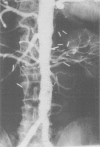Abstract
Saphenous vein aortorenal bypass is the most commonly used surgical procedure for relief of renovascular hypertension. Years of experience have shown the procedure to be effective with satisfactory long-term results. Coexisting disease conditions of the aorta sometimes make alternative methods of renal revascularization preferable, especially when more than one renal artery is involved. Such alternative procedures include transaortic endarterectomy, bilateral renal endarterectomy via a transverse incision across both renal arteries, or extra-anatomic bypass from the splenic, hepatic, or iliac arteries. Two hundred twenty-five renal revascularization procedures performed either alone or in combination with other abdominal vascular procedures during the last 5 years is reported. In 18 patients, one of the above procedures was performed. This experience with these various types of renal revascularization will be discussed with particular reference to indications, technique, and potential pitfalls of each procedure.
Full text
PDF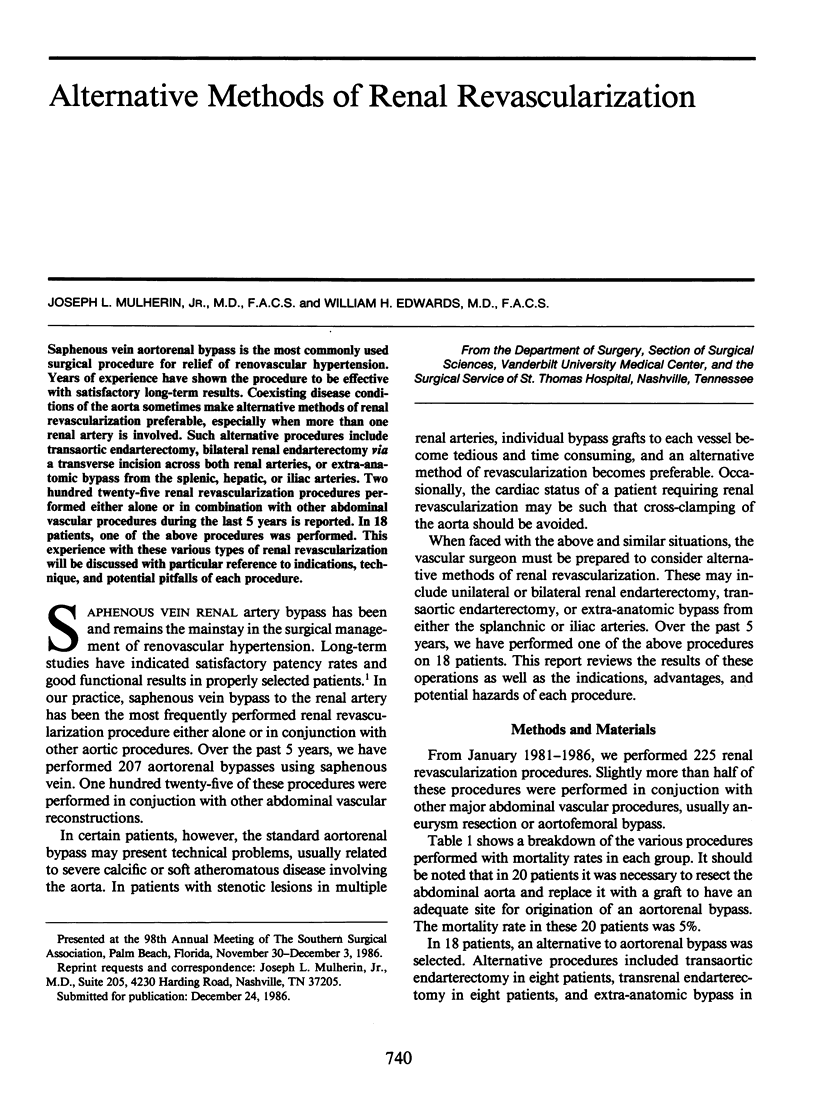

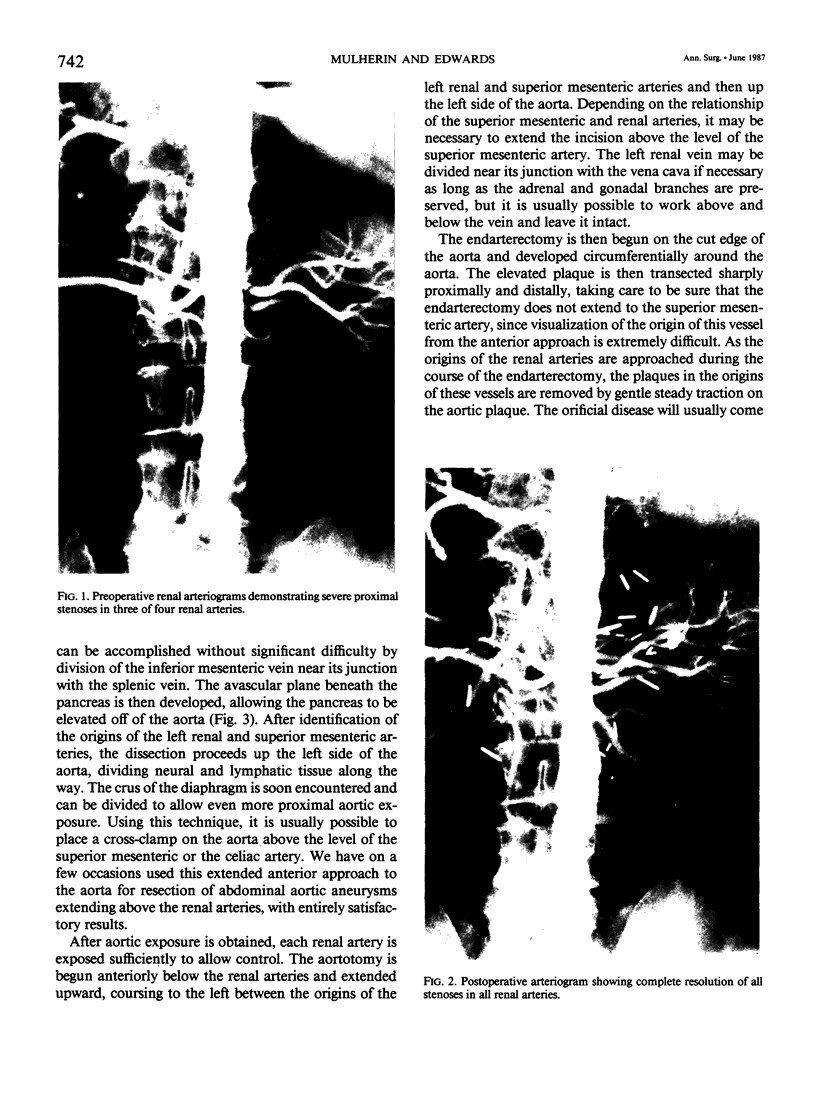
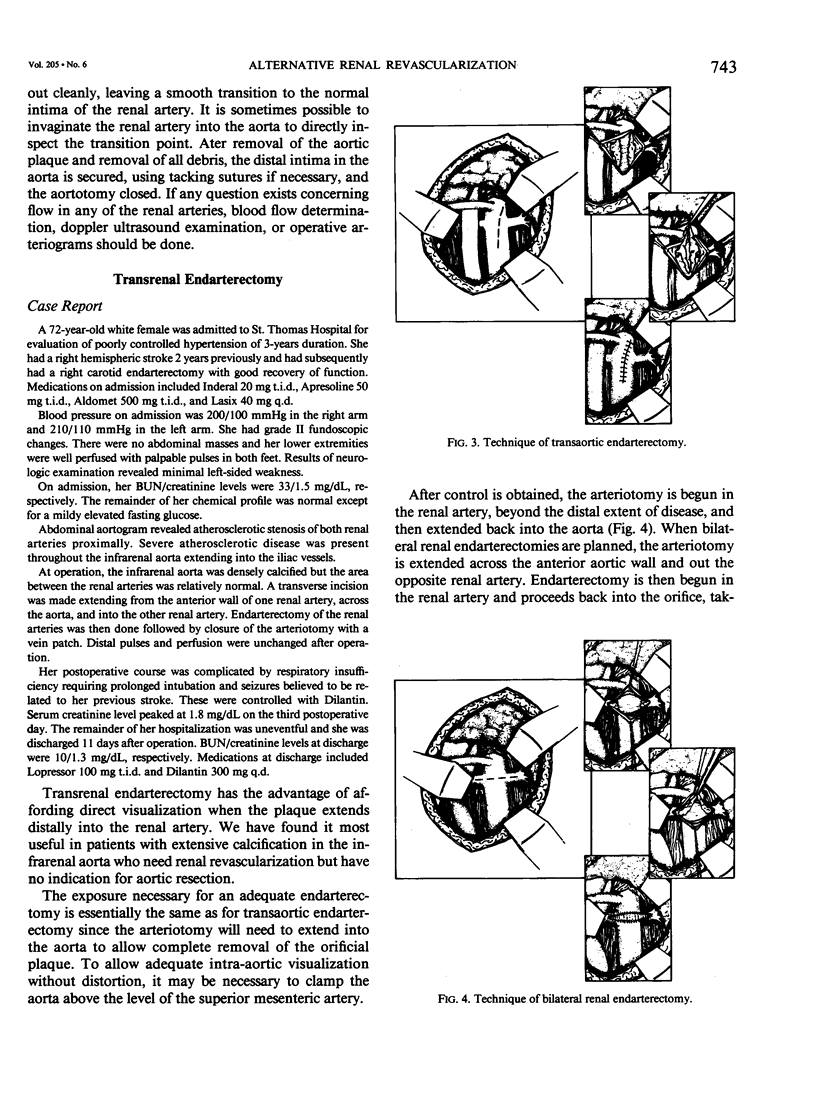
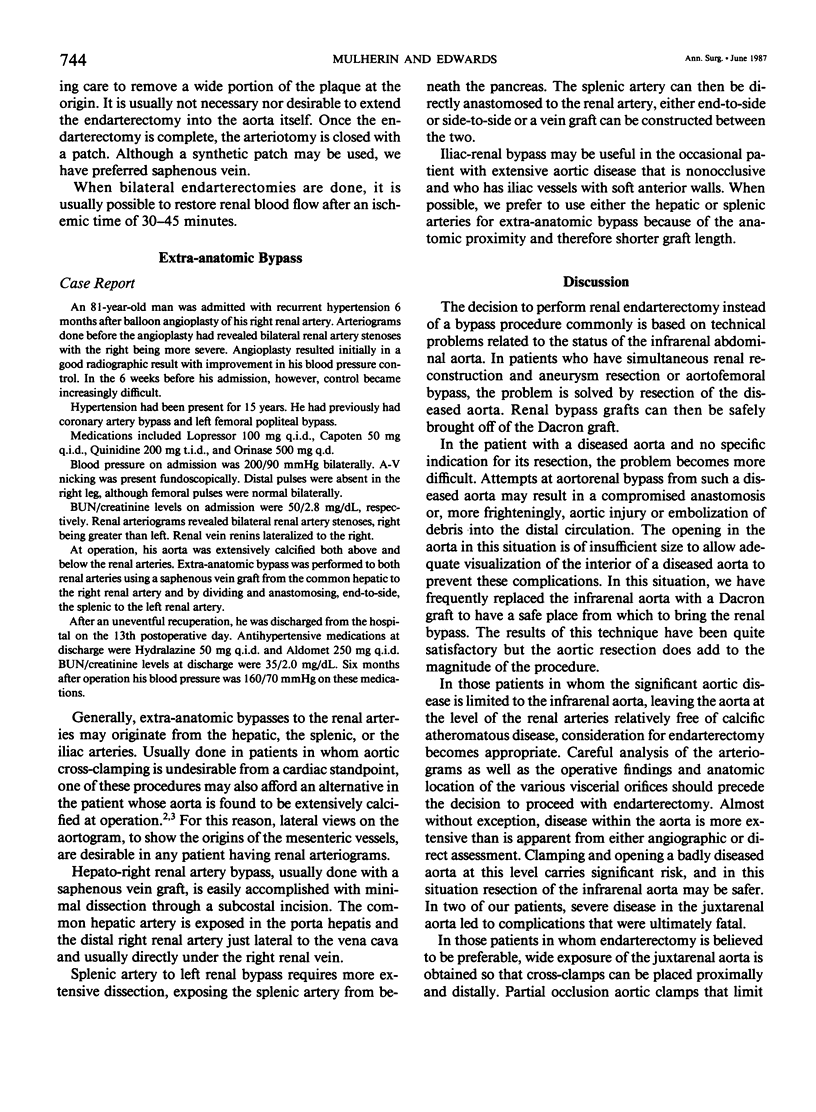
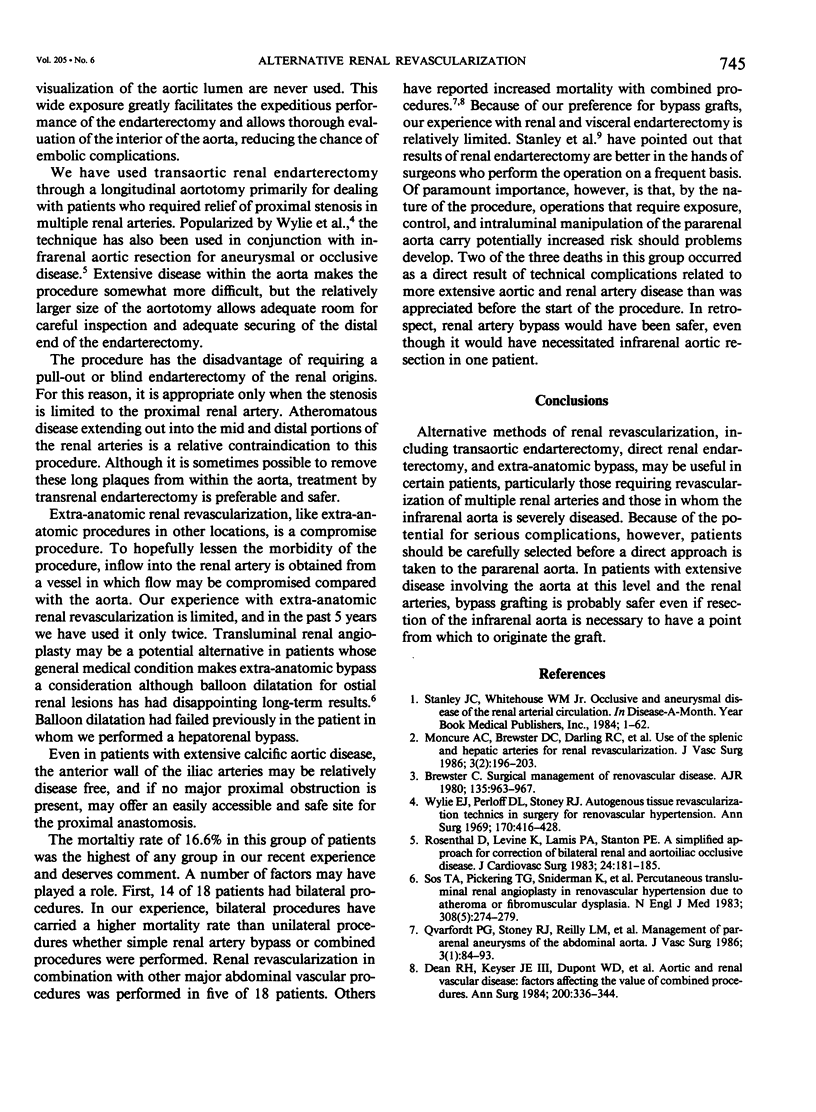
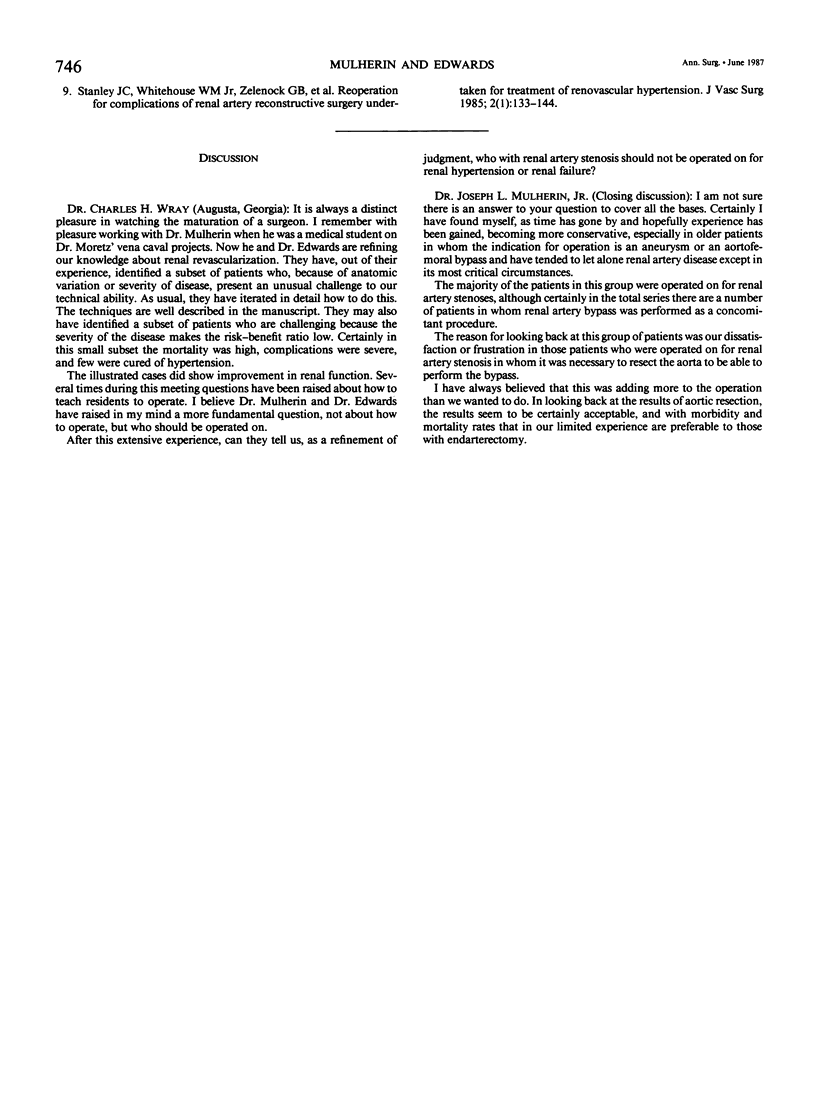
Images in this article
Selected References
These references are in PubMed. This may not be the complete list of references from this article.
- Brewster D. C. Surgical management of renovascular disease. AJR Am J Roentgenol. 1980 Nov;135(5):963–967. doi: 10.2214/ajr.135.5.963. [DOI] [PubMed] [Google Scholar]
- Dean R. H., Keyser J. E., 3rd, Dupont W. D., Nadeau J. H., Meacham P. W. Aortic and renal vascular disease. Factors affecting the value of combined procedures. Ann Surg. 1984 Sep;200(3):336–344. doi: 10.1097/00000658-198409000-00011. [DOI] [PMC free article] [PubMed] [Google Scholar]
- Moncure A. C., Brewster D. C., Darling R. C., Atnip R. G., Newton W. D., Abbott W. M. Use of the splenic and hepatic arteries for renal revascularization. J Vasc Surg. 1986 Feb;3(2):196–203. doi: 10.1067/mva.1986.avs0030196. [DOI] [PubMed] [Google Scholar]
- Qvarfordt P. G., Stoney R. J., Reilly L. M., Skioldebrand C. G., Goldstone J., Ehrenfeld W. K. Management of pararenal aneurysms of the abdominal aorta. J Vasc Surg. 1986 Jan;3(1):84–93. doi: 10.1067/mva.1986.avs0030084. [DOI] [PubMed] [Google Scholar]
- Rosenthal D., Levine K., Lamis P. A., Stanton P. E. A simplified approach for correction of bilateral renal and aortoiliac occlusive disease. J Cardiovasc Surg (Torino) 1983 Mar-Apr;24(2):181–185. [PubMed] [Google Scholar]
- Sos T. A., Pickering T. G., Sniderman K., Saddekni S., Case D. B., Silane M. F., Vaughan E. D., Jr, Laragh J. H. Percutaneous transluminal renal angioplasty in renovascular hypertension due to atheroma or fibromuscular dysplasia. N Engl J Med. 1983 Aug 4;309(5):274–279. doi: 10.1056/NEJM198308043090504. [DOI] [PubMed] [Google Scholar]
- Stanley J. C., Whitehouse W. M., Jr Occlusive and aneurysmal disease of the renal arterial circulation. Dis Mon. 1984 Apr;30(7):1–62. doi: 10.1016/0011-5029(84)90009-9. [DOI] [PubMed] [Google Scholar]
- Stanley J. C., Whitehouse W. M., Jr, Zelenock G. B., Graham L. M., Cronenwett J. L., Lindenauer S. M. Reoperation for complications of renal artery reconstructive surgery undertaken for treatment of renovascular hypertension. J Vasc Surg. 1985 Jan;2(1):133–144. [PubMed] [Google Scholar]
- Wylie E. J., Perloff D. L., Stoney R. J. Autogenous tissue revasculariztion technics in surgery for renovascular hypertension. Ann Surg. 1969 Sep;170(3):416–428. doi: 10.1097/00000658-196909010-00010. [DOI] [PMC free article] [PubMed] [Google Scholar]




